If you want to enjoy moist chicken breast, which is often dry, give this recipe a try. Sarada Chicken is a simple yet flavorful Japanese dish that features chicken breast, making it a great option for a healthy meal.

Jump to:
What is Sarada Chicken?
Sarada Chicken is a Japanese dish made by marinating chicken breast to infuse it with flavor, then gently poaching it. Marinating and cooking chicken breast at a low temperature results in a moist, juicy texture.
In Japan, this dish is called "Salad Chicken (サラダチキン)," a Japanese-English term meaning "chicken for salads." However, to avoid confusion with "chicken salad," I have chosen to translate it as "Sarada Chicken" here, using the Japanese-style name instead.
This dish was originally created in 2001 by a chicken vendor named Amatake to promote chicken breast, which had often been avoided in Japan due to its dry texture. Initially, it was sold as an ingredient for salads, as the name suggests, but its popularity soared as a tasty way to enjoy this high-protein, low-calorie meat, and it gradually became a stand-alone dish. Today, it is a staple item found in grocery stores and convenience stores throughout Japan.
It is suitable not only for everyday meals but also for those on a diet. In Japan, it is also known as an essential source of protein for those who work out. Since most of the cooking process is hands-off, it is quite easy to make at home—so feel free to give it a try.
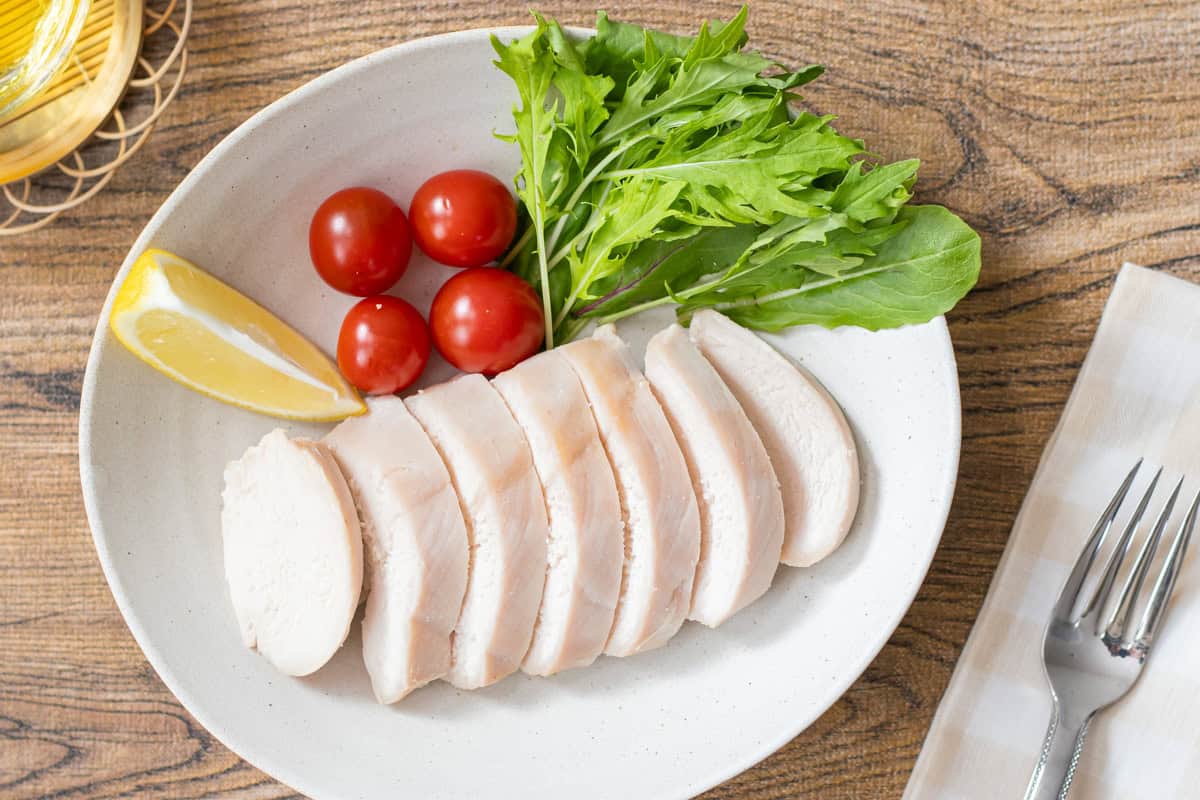
A simple trick for achieving a juicier texture
Marinating chicken breast in a simple seasoning liquid and then poaching it results in a reasonably moist texture.
However, to achieve an even juicier result, it is important to pay attention to the marinade—especially its water content. Adding the right amount of water to the marinade helps prevent the chicken from losing moisture due to the osmotic effects of salt and sugar.
If the concentration of salt and sugar in the brine is too high, it can draw moisture out of the chicken. To avoid this, keep the concentrations of salt and sugar each below 5%.
Flavor variations
First of all, I recommend trying this dish as written in the recipe, but you can also enjoy it with a variety of flavors to suit your preferences. Here are some popular options in Japan:
- Garlic
- Ginger
- Lemon
- Herbs (such as basil, rosemary, or cilantro)
- Black pepper
- Yuzu kosho (a condiment made with green chili peppers and yuzu citrus)
- Chili pepper
- Olive oil
By incorporating these flavors, you can continue enjoying the dish without getting bored, even if you eat it every day. The variety of flavors is one of the reasons why sarada chicken is so popular in Japan. If you would like to experiment with different flavors, try adding your favorite one in step 2 of the recipe below.
Achieving food safety without compromising texture
When cooking raw meat, including but not limited to chicken, it is necessary to heat it to an internal temperature of 167℉ (75℃) or above for at least 1 minute to prevent food poisoning.
However, cooking chicken breast at this temperature will not result in a moist texture. To maintain a moist texture while achieving the same sterilization effect as heating to 167℉ (75℃) for 1 minute, the internal temperature of the meat needs to reach 149℉ (65℃) for at least 15 minutes, or 145℉ (63℃) for 30 minutes or longer.
While my sarada chicken recipe adheres to these safety standards, it is important to note that altering the cooking process or reducing the cooking time increases the risk of food poisoning. Additionally, if you live in a cold climate or at a high altitude, simply following the recipe may not be sufficient to meet these standards. In such cases, make appropriate adjustments to ensure food safety, such as adding an extra heating step.

📋Step-by-step recipe
Ingredients
For the brine:
- ½ cup water
- ½ Tbsp sugar
- 1 tsp salt
Instructions
🕒 Total: 4 hrs 10 mins
Step 1
Pierce the chicken breast with a fork to help the seasoning soak in. If any parts are thicker than 1 inch (2.5 cm), make cuts to reduce the thickness to less than 1 inch (2.5 cm).
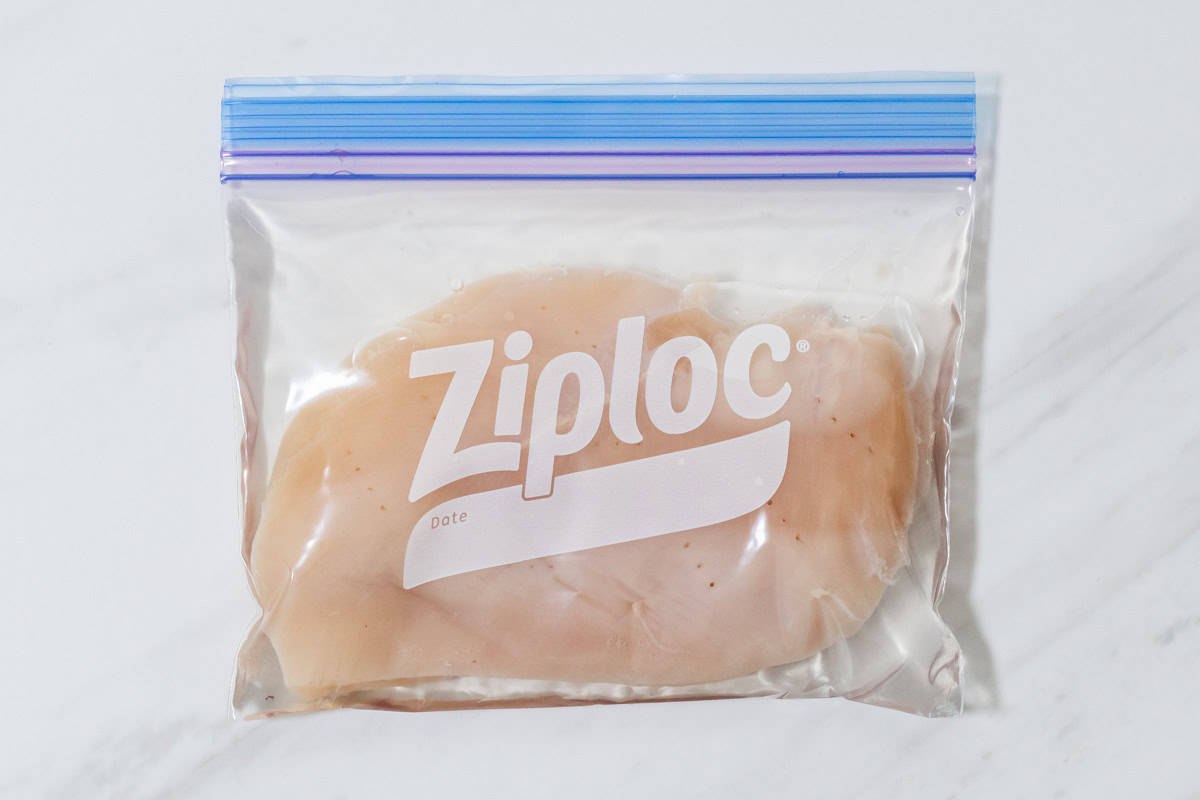
Step 2
Mix water, sugar, and salt in a Ziploc bag until fully dissolved. Then, add the chicken, seal the bag—pressing out as much air as possible—and let it marinate in the refrigerator for at least 3 hours (overnight is also fine). Take the bag out of the refrigerator about 30 minutes before cooking in the next step to allow the chicken to come to room temperature.
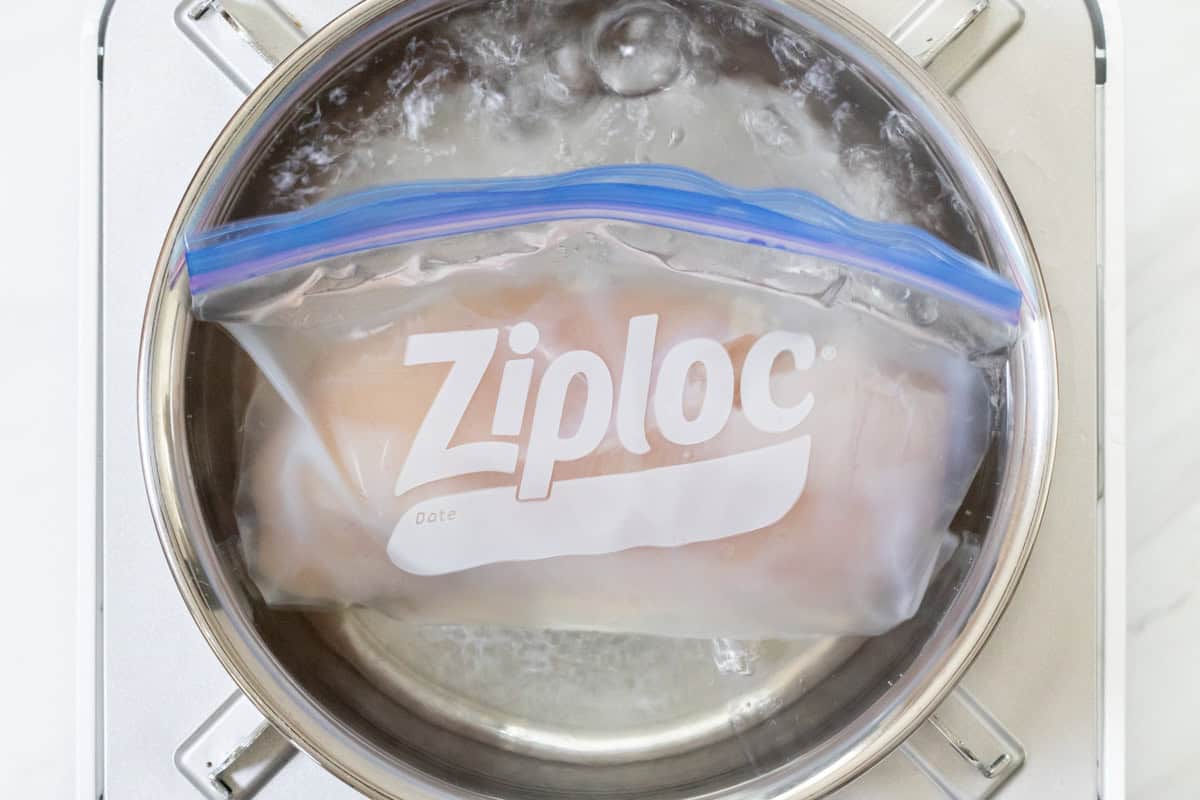
Step 3
Fill a large pot with plenty of water (ideally half a gallon/1.9 liters or more per 2 servings) and bring it to a boil. Once boiling, immerse the Ziploc bag with the chicken in the pot. If the chicken is not fully submerged in the water, place a heat-safe bowl or something similar on top to weigh it down. Cover the pot, turn off the heat, and let it sit for at least an hour.
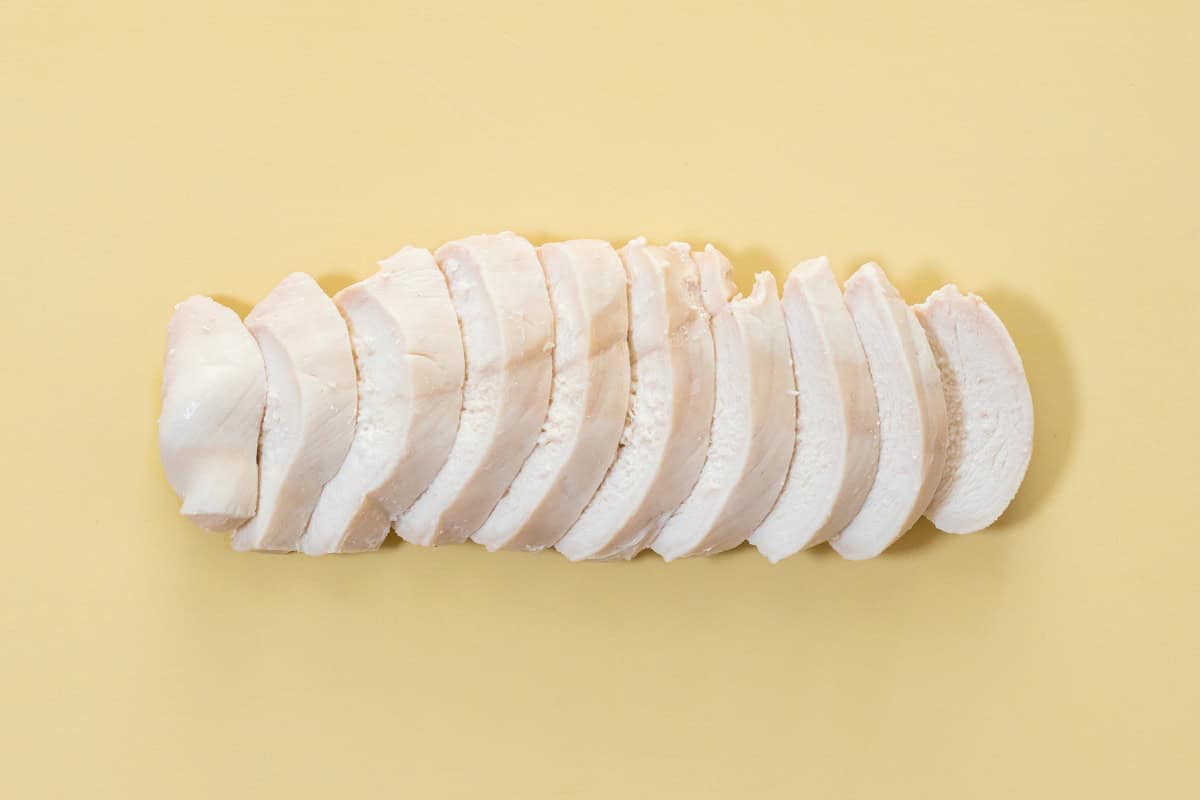
Step 4
Remove the Ziploc bag from the pot and cut the chicken into bite-sized pieces.
To store
You can store it in the refrigerator for up to 3 days.
Cooking tips
- The chicken breast should be brought to room temperature before cooking. This allows heat to penetrate the center of the meat more easily, which helps reduce the risk of food poisoning.
- Place the chicken breast in a large pot filled with plenty of water. Using plenty of water helps maintain a stable temperature and enables low-temperature cooking through residual heat.

If you try this recipe, I’d love to hear what you think. Please consider leaving a review and star rating in the comments below. If you enjoyed it, I’d really appreciate it if you shared it with your friends.
More chicken recipes you'll love
Recipe card

Sarada Chicken (Japanese Poached Chicken Breast)
Instructions
- Pierce the chicken breast with a fork to help the seasoning soak in. If any parts are thicker than 1 inch (2.5 cm), make cuts to reduce the thickness to less than 1 inch (2.5 cm).
- Mix water, sugar, and salt in a Ziploc bag until fully dissolved. Then, add the chicken, seal the bag—pressing out as much air as possible—and let it marinate in the refrigerator for at least 3 hours (overnight is also fine). Take the bag out of the refrigerator about 30 minutes before cooking in the next step to allow the chicken to come to room temperature.
- Fill a large pot with plenty of water (ideally half a gallon/1.9 liters or more per 2 servings) and bring it to a boil. Once boiling, immerse the Ziploc bag with the chicken in the pot. If the chicken is not fully submerged in the water, place a heat-safe bowl or something similar on top to weigh it down. Cover the pot, turn off the heat, and let it sit for at least an hour.
- Remove the Ziploc bag from the pot and cut the chicken into bite-sized pieces.
Notes
- You can store it in the refrigerator for up to 3 days.


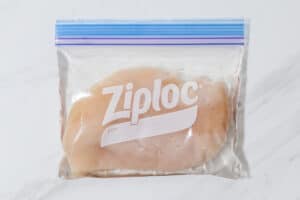

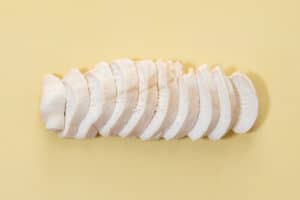
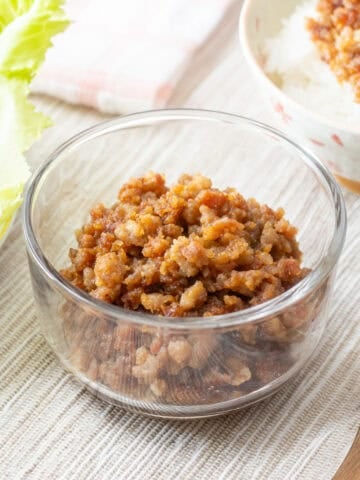


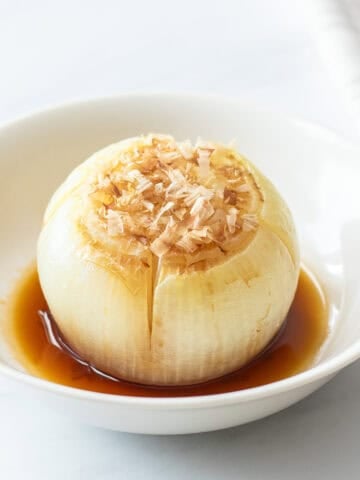
Leave a Rating and a Comment